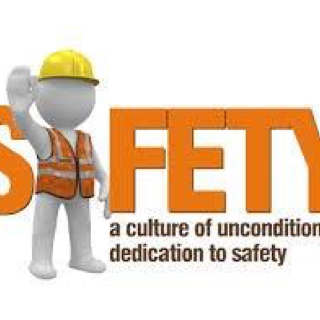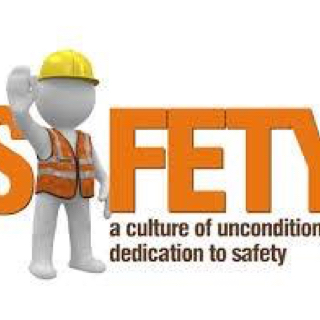Information
-
GSP Audit Document No.
Plant Information
-
Plant Location
-
Plant Manager
-
Inspection Date
-
Name of Person Conducting Audit
-
Auditor Signature
-
Internal Close Out Meeting
-
Meeting Date
-
Plant Manager
6.1 - Wastewater & Stormwater Discharges
-
Are all wastewater discharges permitted as required?
-
Does the discharge permit represent current operations and conditions at the site (e.g. flow rates, treatment processes, discharge points)?
-
Have any changes to the physical structure or operational arrangements since the permit was issued been reported to the appropriate regulatory agency?
-
Have Discharge Monitoring Reports (DMRs) or other required reports been submitted in accordance with permit conditions?
-
<br>Has the facility reported to the appropriate regulatory agency within 24 hours (or other applicable time-frame and documented) of each instance of non-compliance?
-
Does the facility have a system to inventory all sources of wastewater discharged to sewers, to ensure compliance with POTW requirements and discharge permit application? (Should include all floor drains and contributory waste water streams).
-
Does the facility have a copy of the current local sewer ordinance?
-
Has the facility reviewed the sewer ordinance to ensure compliance?
-
Does the facility have a written sampling program?
-
Has the facility reviewed effluent analytical results to determine compliance with permit and/or use ordinance limitations?
-
If applicable, did the facility notify the POTW of any discharge which could have caused an operational upset in the POTW?
-
Are the parameters and sampling frequency in accordance with the Wastewater Discharge Permit issued by the local authorities?
-
Do sampling locations and collection methods ensure representative samples?
-
Are samples collected in accordance with methods specified in the permit?
-
If applicable, is flow measured by methods specified in the permit?
-
Are sampling devices and flow measurement equipment calibrated on a scheduled basis?
-
Are calibration records maintained?
-
Are spare parts for monitoring equipment maintained at the site?
-
Are chain-of-custody documents maintained for transfer of samples?
-
If an outside laboratory is used, is the lab certified for wastewater analysis?
-
Do monitoring records include: Exact Location, date, and time of sampling? The Date(s) analyses were performed? The identity of the individual who performed the analyses? The results of such analyses? The analytical techniques or methods used?
-
Are the following records retained for as long as required by applicable law: Original strip chart recordings? Calibration and maintenance records for flow measurement equipment and lab equipment? Records required by any pertinent permit?
-
Has the facility obtained either a Stormwater Permit or a Certification of No Exposure?
-
Have all Stormwater discharge points been inventoried and documented in compliance with applicable storm water permitting requirements?
-
Have measures been taken to minimize the potential for hazardous materials to enter the stormwater discharge system
-
Are all stormwater inspections current and documented?
6.2 - Solid and Hazardous Waste Management
-
Does the generator have an EPA/State or other governmental identification number?
-
Has the facility identified and documented all solid wastes generated on site which exhibit a hazardous characteristic - corrosivity, ignitability, reactivity, or Toxic Characteristic Leaching Potential?
-
<br>Have all non-hazardous waste streams been identified and documented on a Waste Inventory Log Form?
-
Are procedures established to determine whether a newly generated solid waste is non-hazardous?
-
Are non-hazardous wastes segregated from hazardous wastes?
-
Are all non-hazardous recyclable wastes being segregated?
-
Are waste analyses and test results available for at least the last 3 years?
-
Has the facility conducted an audit of their waste transportation contractors or obtained compliance documentation?
-
Has the facility conducted an audit of their TSDF contractors or obtained compliance documentation?
-
Are all hazardous wastes stored, shipped to off-site TSD's or shipped to an on-site storage area within 90 days? (180 days for small quantity generator).
-
Is each shipment of hazardous waste accompanied by a hazardous waste manifest?
-
Does the facility maintain copies of all manifests?
-
Are all manifests filed with a certificate of Notification for land disposal status (U.S. only), if required?
-
Does each manifest contain all the required waste and generator information?
-
Did the facility sign and date all manifests inspected?
-
Did the facility obtain signature and date of acceptance from initial transporter?
-
Does the returned copy of each manifest include signature of the receiving TSD owner/operator and the date of acceptance?
-
If a signed manifest is not returned within 35 days of shipment, does the facility begin an investigation?
-
If a signed manifest is not returned within 45 days of shipment, or is returned unsigned by the receiving TSDF, is an Exception Report completed and sent to the appropriate agency?
-
Does each Exception Report contain a legible copy of the manifest and a cover letter explaining the facility's efforts to locate the waste shipment?
-
Are hazardous wastes packaged for shipment in accordance with applicable requirements?
-
Is each container holding hazardous waste marked in accordance with applicable requirements including: ID number? Hazardous waste code? UN/NA Number? DOT Shipping name? Accumulation Date (Drum full)? Manifest document number (at time of shipment)?
-
Is each container with a volume of 110 gallons or less marked with the required Hazardous Material label, and the name and ID number of the generator?
-
Does every hazardous waste transporter used by the facility have an identification number?
-
Has the facility completed and submitted annual reports to the state by March 1, or other applicable date of each calendar year?
-
Is hazardous waste stored in satellite areas managed properly? - operator control; - HW marking; - no ruptured leaks; - total volume less than 55 gallons?
-
Are areas subject to spills, such as loading and unloading areas, inspected at least weekly?
-
Is the storage area inspected weekly and records kept of problems and correction actions?
-
Is an inspection log maintained for the storage area and does it include: Date and Time of Inspection? Name of Inspector? Observations? date and Nature of Repairs and Is the inspection log retained for at least three years?
-
Is the container and/or drum storage area designated by a sign marked "Hazardous Waste"?
-
Are all drums and other containers in good condition?
-
Are all drums and other containers clearly marked with the data at which accumulation began and labeled as to contents?
-
Are drums and other containers kept closed except while adding or removing waste?
-
Are all drums and other containers used compatible with the waste being stored?
-
Are drums and other containers handled in a manner to avoid leakage or ruptures?
-
Are incompatible wastes stored in separate drums or containers and physically separated?
-
Are drums and other containers protected from extreme environmental conditions?
-
If drums or other containers are stacked, is the stacking structurally sound?
-
Is spill clean-up material stored near drums or other containers?
-
Is there adequate aisle space for movement of personnel and emergency equipment?
-
Does the container and/or drum storage area have secondary containment and does the containment have the capacity to hold 110% of the volume of containers or the volume of the largest container?
-
Are "No Smoking" signs posted in hazardous areas?
-
Are containers holding ignitable or reactive wastes (stored outdoors) kept at least 15 meters (50 feet) from the site property line?
-
Is there a written Contingency Plan which addresses the following: Actions to be taken in response to fire, explosion or unplanned release of hazardous waste? Does it include emergency contact list, equipment list and emergency response arrangements?
-
Have copies of the Contingency Plan been provided to all local police departments, fire departments, hospitals, and state and local emergency response teams?
-
Have arrangements with these agencies been made, and documented, to familiarize them with the facility, hazardous wastes handled, and emergency procedures?
-
Does the facility have provisions for updating the Contingency Plan after it has been implemented if significant changes are made in facilities or personnel?
-
If more than one person is authorized to act as Emergency Coordinator, are all alternates listed in the Contingency Plan in the order in which they would serve?
-
Are there portable fire extinguishers and/or fire control equipment in the areas where hazardous waste are stored?
-
Whenever hazardous waste is being handled, do all personnel involved have immediate access to a telephone or two-way radio?
-
Are measures in place to ensure that all employees who handle hazardous waste receive training prior to handling hazardous waste and annually thereafter?
-
Are the following reports completed as required and maintained for at least 3 years? Annual Reports. Manifests and signed, returned copies, exception Reports Waste Analysis Results
-
Are the following personnel documents maintained at the facility? Written job description for each hazardous waste position, training requirements, and documentation of completed training?
-
Does the facility have a written program to reduce the volume and toxicity of waste generated?
6.3 -Tank Management and Spill Prevention and Control
-
Are all tank secondary containment structures constructed so as to prevent permeation, drainage or infiltration into ground or surface waters, soil or air?
-
Does the facility have a written inspection program for storage tanks and storage areas?
-
Are all aboveground tank systems inspected and bulk storage areas at least monthly?
-
Area all inspection reports maintained at the facility for at least 3 years?
-
Do all inspection reports include: Tank or storage area identification (name or reference number)? Date of Inspection. Results of inspection, including repair requirements? Inspector Name?
-
Have all repairs indicated on inspection reports been completed or in process?
-
Are all storage tanks labeled with the chemical or common name of substance stored, the total capacity of the system, and appropriate hazard codes?
-
Are all secondary containment structures designed to hold 110% of the largest volume within the contained system?
-
Are secondary containment systems for indoor tanks constructed of impermeable material, such as concrete?
-
Are all tanks equipped with overfill protection devices?
-
Are all tanks protected from vandalism and positioned away from traffic hazards?
-
Are all piping and connector systems and fittings corrosion-resistant?
-
Is there a notice posted near the storage area warning of the presence of hazardous or toxic materials and providing safety information to assist emergency response personnel?
-
Does the facility have a SPCC or other spill control plan?
-
Does the plan include the following: A inventory of storage areas, containment, spill response equipment and procedures? A description of each spill and discharge that has occurred within the previous year?
-
If so, has the plan been reviewed and evaluated in the last five years?
-
Does the facility have a designated Emergency Coordinator who has the authority to commit the necessary resources in an emergency?
-
Has the SPCC Plan been amended to reflect facility changes?
-
Does the facility utilize or plan to utilize off-site spill response contractor(s)?
-
If so, does the facility maintain a list of local cleanup contractors?
-
Are standard contracts in effect with any of these contractors?
-
Do contractors have the necessary permits and licenses to offer these services?
6.4 - Air Emissions
-
Does the facility have air permits for all emission sources requiring permits?
-
Does the facility have an air emissions inventory that includes all process sources, contaminants, and emission rates?
-
Was the appropriate regulatory authority notified within 30 days of completion that the installation or modification was complete and the source placed into operation?
-
Does the facility comply with all emissions monitoring requirements and schedules, and submit all required reports?
-
Has the facility operated within the permitted Air Quality limitations during the past year?
-
Is equipment maintained so as to minimize leaks and fugitive emissions?
-
Were test resultsemissions analysis provided to the regulatory authority or was a construction permit obtained?
-
Are annual records of solvent consumption maintained?
-
Are solvents stored in covered containers?
-
Does the facility maintain, service, repair, and dispose of air conditioning refrigeration equipment records involving CFC refrigerant?
6.5 - Emergency Planning & Community Right to Know (US Only)
-
Does the facility store or use Extremely Hazardous Substances (EHS) on site in excess of their threshold planning quantities?
-
Did the facility notify the SERC that the facility is subject to emergency planning requirements under SARA?
-
Has the facility notified the Local Emergency Planning Committee of changes at the facility which are relevant to emergency planning?
-
Does the facility have procedures in place for notifying the appropriate agencies of emergency releases?
-
Does the notification procedure includes telephone numbers for the following agencies and specify when each should be notified? National Response Center (NRC)? State Emergency Response Commission? Local Emergency Planning Committee? Other?
-
Have chemical inventories at the facility been checked against current versions of the following lists to insure appropriate reporting? CERCLA Hazardous Substances and RQs? SARA Extremely Hazardous Substances & TPQs? SARA Toxic Chemicals?
-
Has the site submitted a list for each hazardous chemical stored on site, to each of the following agencies: The Local Emergency Planning Committee? The State Emergency Response Commission? The local fire department?
-
For mixtures, has the facility submitted to the above agencies: The MSDS or a list of each element or compound in the mixture which is a hazardous chemical or EHS?
-
Has the facility submitted an updated MSDS for any new material or when there is significant new information?
-
Has the facility made an annual submission (March 1st) of Tier II Emergency and Hazardous Chemical Report Forms to the following agencies: Local Emergency Planning Committee? State Emergency Response Commission? Local fire department?
-
Did the Tier I or Tier II report include information regarding elements or compounds found in mixtures which contain hazardous chemicals?
-
Has the facility characterized its hazardous chemicals according to the health and physical hazards set forth under the Occupational Safety and Health Act?
-
Has the facility provided the personnel training required under SARA Section 126 (OSHA HAZWOPER)?
-
Does the facility identify and maintain an inventory of toxic chemicals manufactured, processed, imported, or otherwise used during each calendar year?
-
Has the facility submitted Toxic Chemical Release Inventory Forms for all toxic chemicals identified over the threshold amounts by July 1st of each year?
-
Does the facility have documented procedures for release estimates which are used in toxic chemical release reporting (e.g. air emissions, waste disposal, etc)?
-
Is documentation for the TRI reports being kept for at least three years?
-
Does the facility cross-check reported emissions against other permit limits?
6.6 - Special Materials Management: PCBs, Asbestos, and Pesticides
-
Does the site have documentation on file regarding PCB quantities use, storage, and/or disposal?
-
If the facility has sent PCBs off-site for disposal, were PCB-containing materials (over 50 ppm PCBs) disposed of at an approved TSCA facility?
-
If the site stores and/or uses pesticides on-site, are the pesticides stored and/or used in accordance with the instructions found on the original pesticide contains and with applicable laws?
-
Is there a program in place to ensure that only certified personnel apply pesticides?
-
Is asbestos containing materials (ACM) absent at the Site?
-
Does the facility have an Operation and Maintenance Plan?
-
Is all asbestos containing materials encapsulated and undamaged?
-
Is there a procedure in place involving notification of any future/potential renovation or demolition activities that might involve removing asbestos containing materials?









